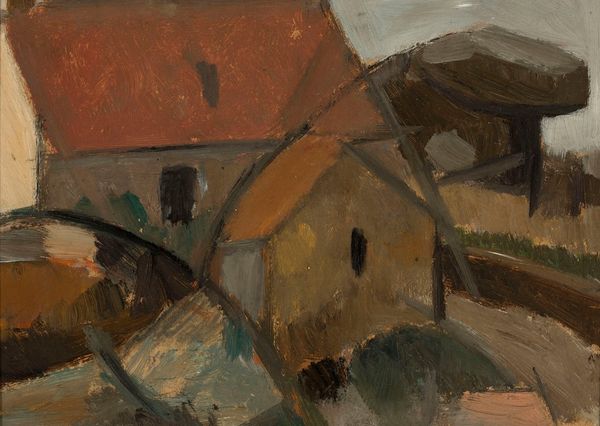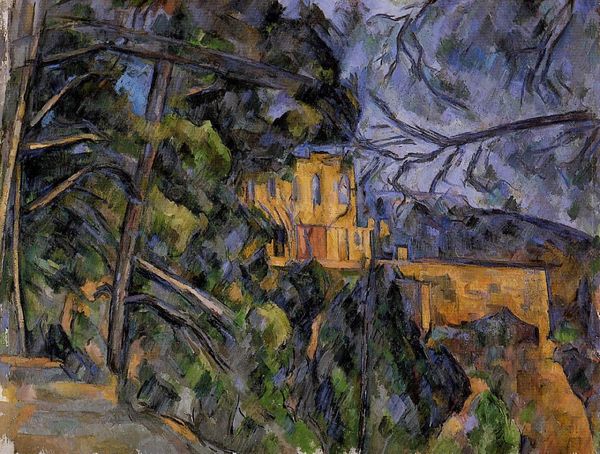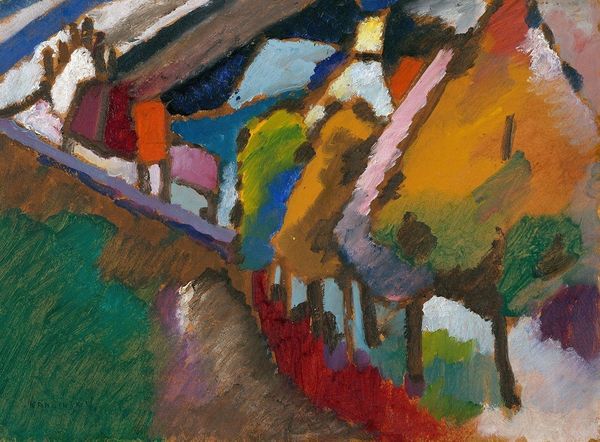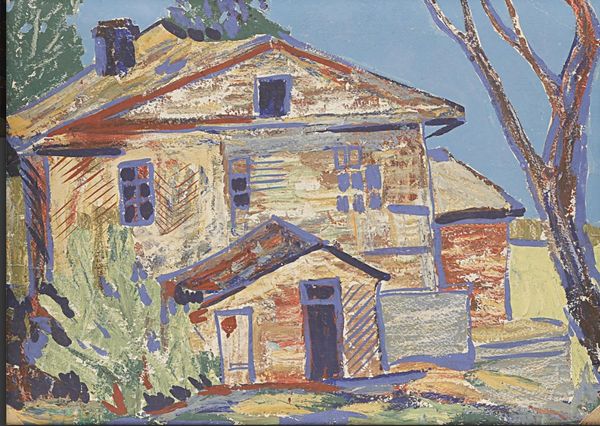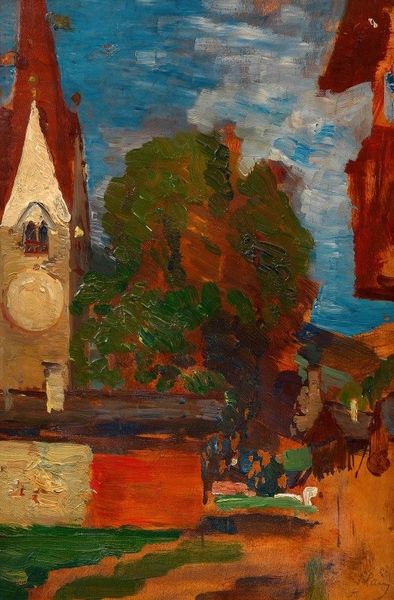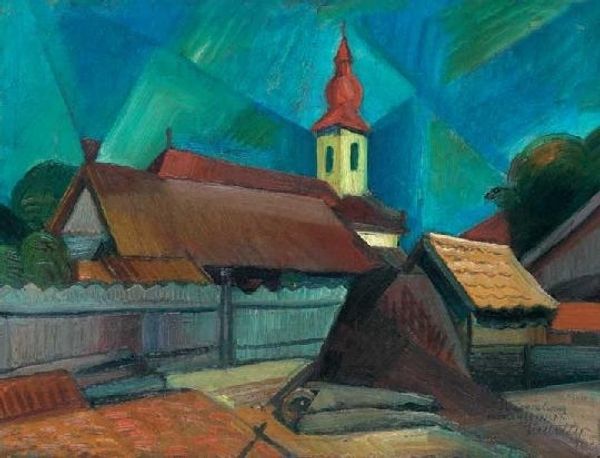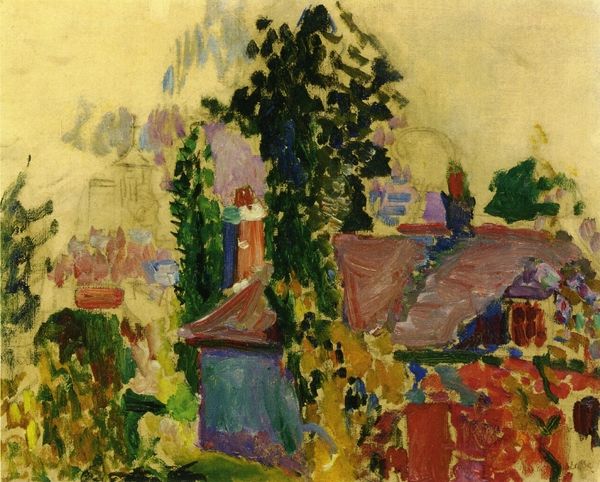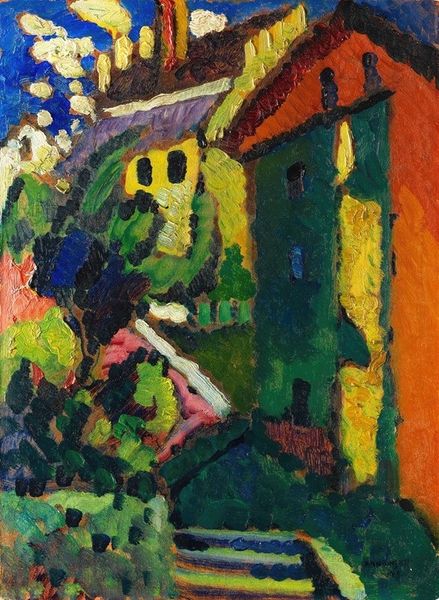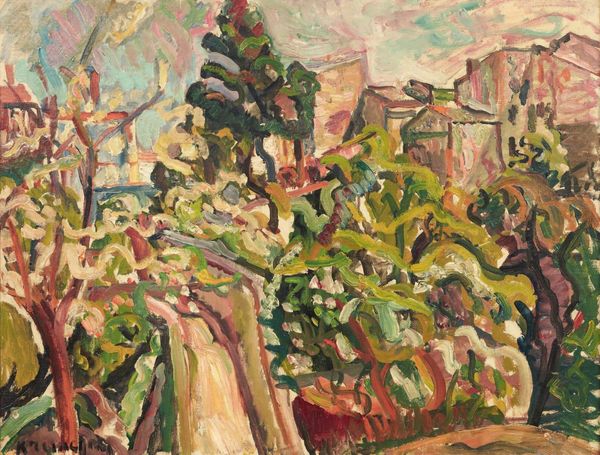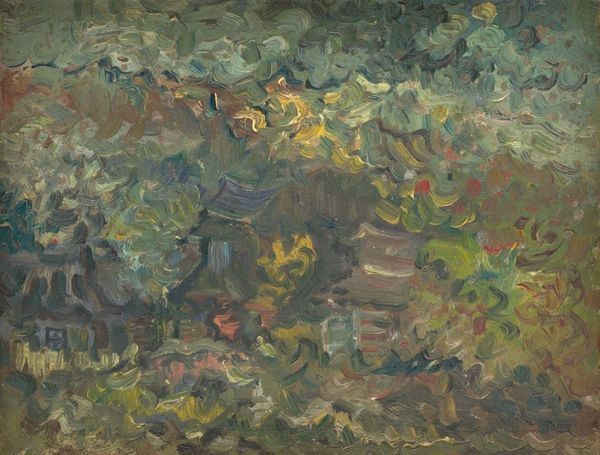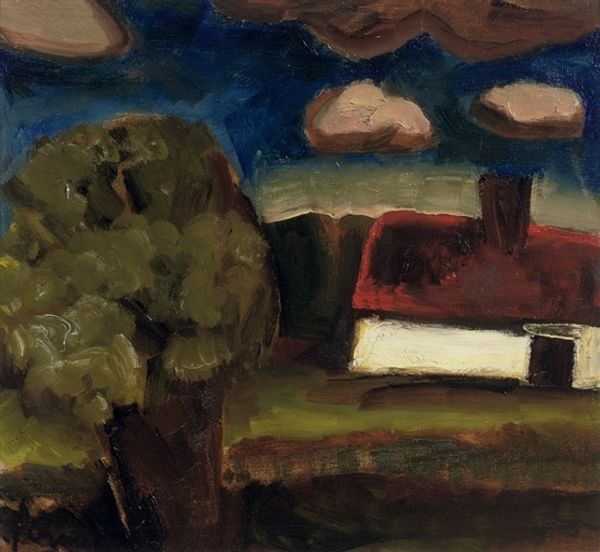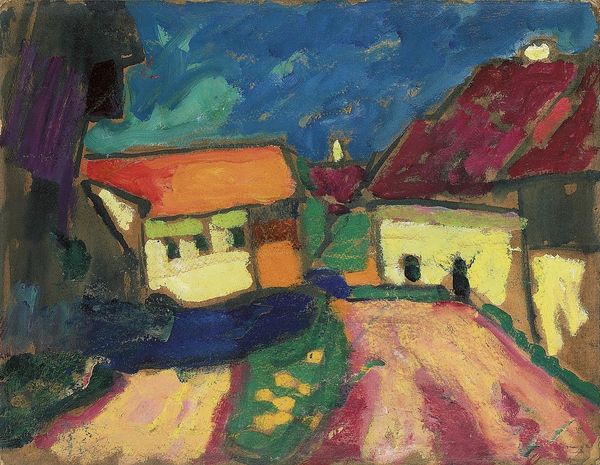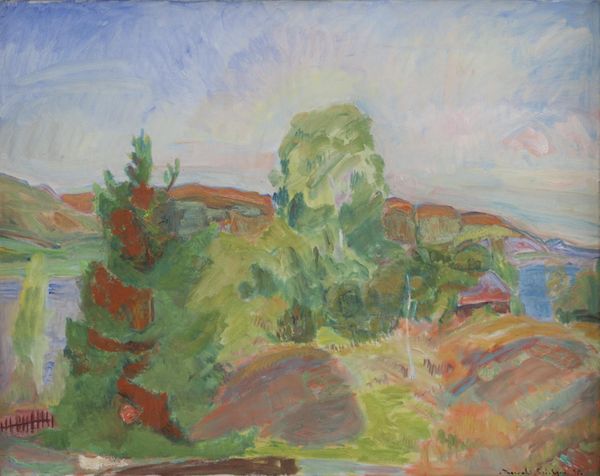
#
abstract expressionism
#
abstract painting
#
impressionist painting style
#
impressionist landscape
#
possibly oil pastel
#
oil painting
#
fluid art
#
acrylic on canvas
#
painting painterly
#
expressionist
Copyright: Public domain
Curator: Sirak Skitnik painted "Boyana Church," although the date is unspecified. It's a wonderful example of expressionist painting. Editor: The colors are immediately striking – that muted terracotta against the dark greens. It gives off an air of seclusion, like a secret haven almost swallowed by the forest. Curator: Indeed, the church itself becomes almost secondary. Considering Skitnik's involvement in Bulgarian modernist circles, we can see this work pushing against the rigid representational styles promoted by earlier regimes, prioritizing subjective experience over faithful depiction. The loose brushstrokes mirror a search for authenticity in a rapidly changing political climate. Editor: Absolutely, and notice the strong diagonals in the composition. It’s a dynamic arrangement. The church isn’t just *there*; it’s leaning, reaching upwards, perhaps hinting at spiritual aspiration, even defiance. What resonates most with me are the traditional Orthodox symbols embedded within a modern visual language. Curator: Precisely. The church building—despite the painting style—becomes a cultural anchor, standing as a testament of faith against both secularizing trends and potentially, against imposed artistic styles favored by totalitarian forces, given the historical backdrop of the time in Bulgaria. The artist's use of impasto lends the piece physicality and emotion. Editor: I find the cross perched on the roof fascinating. The artist uses a familiar and meaningful symbol to frame his expressionist exploration of architecture, landscape, and emotion, simultaneously evoking feelings of continuity and evolution. The very presence of nature, engulfing this monument, may highlight nature’s relentless march regardless of any structure that humankind erects. Curator: And this tension, this dynamic interplay between tradition and modernity, representation and abstraction, marks so much of Skitnik’s work, and that of many of his contemporaries as they navigated new ideologies and cultural shifts in early 20th century Bulgaria. Editor: It’s a testament to the potency of images to weave complex histories. This deceptively simple painting contains so many layers of interpretation and speaks volumes about identity, belonging, and resistance.
Comments
No comments
Be the first to comment and join the conversation on the ultimate creative platform.

